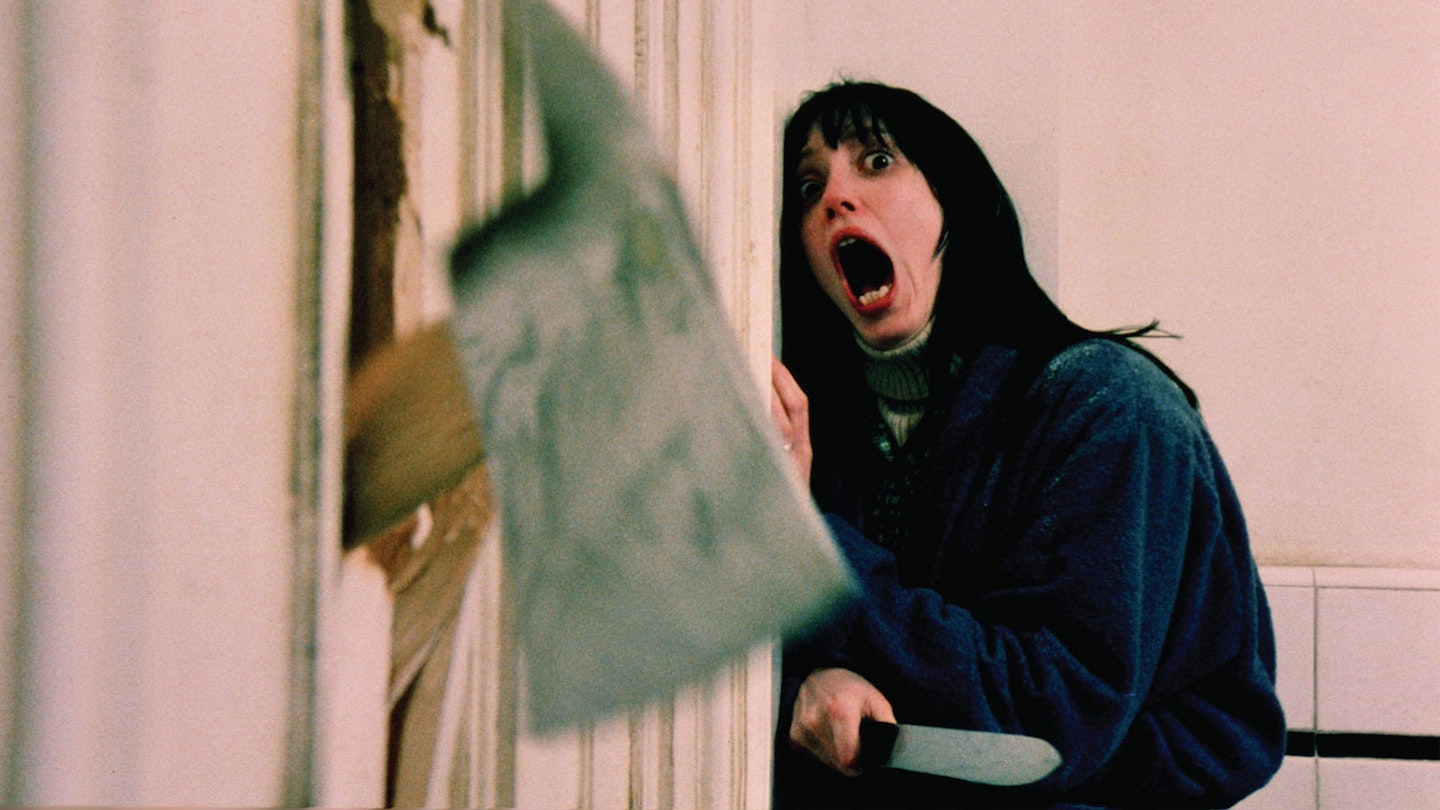Dario Argento, horror's Italian Stallion, puts his bloodstained cards on the table right from Suspiria's gory get-go. In the middle of the night in a raging storm a young woman runs screaming from an exclusive Frieberg ballet school. We see her hurtling, screaming through the woods, illuminated by lightning.
After she arrives at a friend's apartment she peers through a window into the tumult only for an arm to smash through one window pane and, in a loving, extended shot, suffocate her against the other. While her friend drums hysterically against the locked door the gloved hand repeatedly stabs the girl. In the next shot the stabbing continues, this time in full close up as the fiend winds a rope around the shrieking victims legs. And in the piece de resistance, we cut to the friend running into the lobby of the apartment building for help. As she looks up towards a stained glass ceiling, the victim's head crashes through it in a hail of glass shards followed by her body. We cut to the blood drenched corpse, suspended by the rope dripping blood onto the floor, finally Argento pans the camera to reveal his next horror. The falling glass has pinned the friend to the ground crucifix like, the largest sliver having split her face in half.
We are now 13 minutes into Suspiria, and if the poster tagline — "The only thing more terrifying than the first 80 minutes of Suspiria... is the last 10" — has any truth in it we're in for a deeply unnerving experience. Argento, often called the Italian Hitchcock (it's a misnomer, the only things the two actually share are grandiose misogyny and a liking for sustained sequences) is arguably Italy's foremost horror director and Suspiria is his finest movie to date. It's difficult to give a flavour of its unique, surreal, hyper-intense mood by simply describing it. It's not all that helpful to outline the plot, since there's very little of it, and what there is doesn't make much sense.
An American goes to a Frieberg dance academy, finds that people have a habit of vanishing or getting killed in unusual circumstances, discovers it's all down to an ancient coven of witches and burns the place to the ground. And there you have it. But in fact the plot, such as it is, is just a device to link a series of gloriously realised set-pieces. Argento is a maestro of sustained horror sequences. In one a blind man is suddenly set upon by his own guide-dog — the scene is shot audaciously in either extreme long shot (a kind of pigeon's eye view) or extreme close ups of the hound tearing horribly realistic chunks out of the unfortunate man's neck. A young dancer is combing her hair at night only to find a maggot in it. And then another. As she looks up she discovers the whole ceiling is crawling with them and they begin to rain down on her. In one of the most gleefully sadistic sequences ever put on film a scantily clad co-ed tumbles into a barbed wire filled pit. The camera looks on, unmoving, as she struggles, working herself deeper and deeper into the seemingly endless barbs. It's possibly the clearest expression of the director's embedded hatred of women, or at least his desire to see them tortured and mutilated. He remains unrepentant about it. "A woman in peril is emotionally affecting," he told Empire back in 1997. "A man simply isn't."
And then there's Argento's masterful use of deep primary colours — the sets are bathed in garish red and green light (he acquired 1950s Technicolor stock to get the effect) giving the whole film a hallucinatory intensity. The score, composed by Argento and performed by his frequent collaborators, rock band Goblin, sounds as though Hell's demons rented a studio and decided to jam. Screams, wailings, hissing steam and some kind of diabolical digeridoo are punctuated with the occasional distorted shriek of "Witch!". It's enough to loosen the bowels on its own.
Argento, who started out in gialli (pulp thrillers) has never really delivered on the promise, in horror terms at least, he showed with Suspiria. There was a disappointing sequel, Inferno in 1980, which despite a couple of the trademark set-pieces failed to attain the demented heights of its inspiration. Creepers (aka Phenomena (1984) had B-movie stalwart Donald Pleasance battling "moths" while The Stendhal Syndrome (1996) was simply a step too far even for Argento fans with its graphic rape sequence, particularly tasteless since its victim was played by Argento's daughter Asia.








